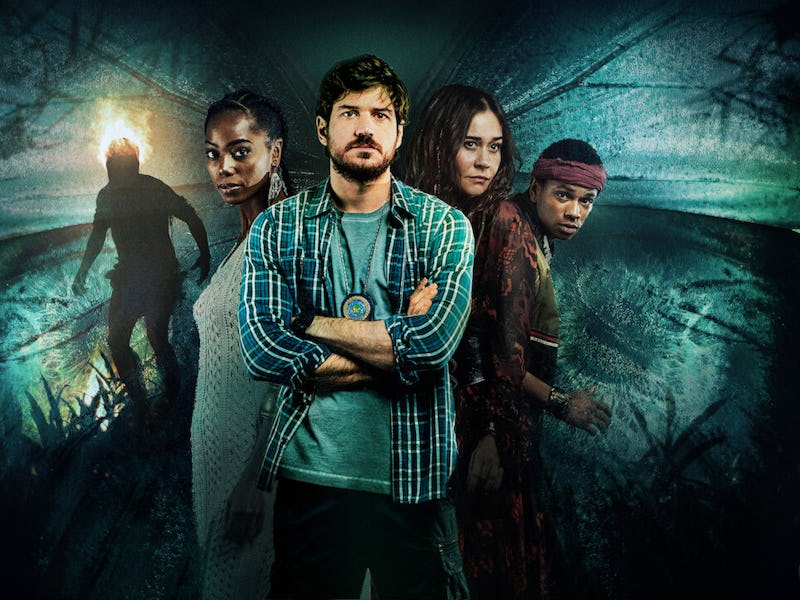Invisible City is Netflix’s international answer to Supernatural
Percy Jackson meets Evil in Netflix's new Brazilian series.

Myths don't age for a reason. Folktales withstand centuries, passed down from generation to generation. These stories are so timeless, there's no way to replace them. Adapting and modernizing these cultural touchstones for television has become more prevalent in recent years. Netflix's new Brazilian fantasy crime drama Invisible City brings this approach to storytelling into fresh new territory, merging elements that will be familiar to fans of Evil and the Percy Jackson books into something wholly its own.
Invisible City opens like an Indiana Jones movie. In a flashback, two men trek through the rainforest at night, when the elder decides to shoot a bird for sport and finds himself stabbed in the back with a flaming spear by a creature with a flaming head and backwards-facing feet. To American viewers, this is a foreign image, but to anyone familiar with Brazilian folklore it's instantly recognizable as the Curupira.
"What if these folktales were real" is a well-worn trope. Just in the past 20 years, shows like Buffy the Vampire Slayer, Charmed, Supernatural, and The Librarians all use classic mythical creatures as both heroes and villains. ABC's Once Upon a Time did the same thing with both classic folktales and modern folktales (Disney movies.) And you can't swing a dead cat at the early 2010s without hitting some sort of vampire/werewolf romance media.
But there are only so many grimdark Grimm tales one can watch before the plot gets tired. With the dawn of the streaming age, a breath of fresh air blew through the genre with the globalization of television. Suddenly, Netflix could buy the U.S. rights to all sorts of international shows adapting very specific folktales. Shows like the Taiwanese Detention, Korean School Nurse Files, or Argentinian The Kirlian Frequency all bring tales from their respective cultures to streaming audiences.
Invisible City takes this renaissance to a new height. It follows Eric, an Environmental Police officer tries to hunt down the killer of his folklorist wife while also investigating a strange underground society extremely interested in a washed-up pink river dolphin. Eric is played by Mario Pigossi, a Netflix original veteran who looks like a combination of John Krasinski and Pedro Pascal.
Eric tends to the beached dolphin.
Over the course of the series, we're introduced to a number of characters who reflect folktales completely new to the mainstream audience. There's a Saci, a prankster nymph who takes the form of a one-legged boy wearing a red cap. In Invisible City, he's named Isac, because anagrams.
There's also a Iara, a mermaid/siren figure, and a Tapire-iauara, a shape-shifting warthog spirit guardian. Taking the guises of a singer and bouncer, they assist Inés, the famed Curupira, on her quest to keep their secret hidden to the mainstream culture.
Perhaps to a viewer who grew up with the myths, this series would seem tired. But as a blind viewing, it works as a familiar formula exploring new stories.
Camila, Inés, and Tutu, three of the "entities."
Cultural exchange is difficult to communicate. It's hard to understand another culture's folklore without understanding the context surrounding it. Invisible City replaces this context with the modern world, a world that's increasingly similar from country to country. This way, even an American audience can learn about a modernized version of Brazilian folklore in the midst of a fantasy crime drama.
Eric's involvement with the "entities" eventually hits closer to home than even the loss of his wife. As he investigates more into his past and the past of the village where his wife died, dark secrets and capitalist schemes come to light.
Invisible City may feel like just another "myths are real" story, but the comfort of the genre broadens the cultural horizons, and in a world with limited travel, that's exactly what we need.
Invisible City premieres on Netflix on February 5.
This article was originally published on